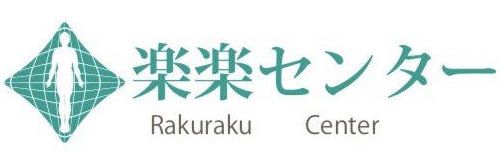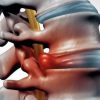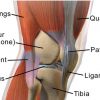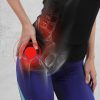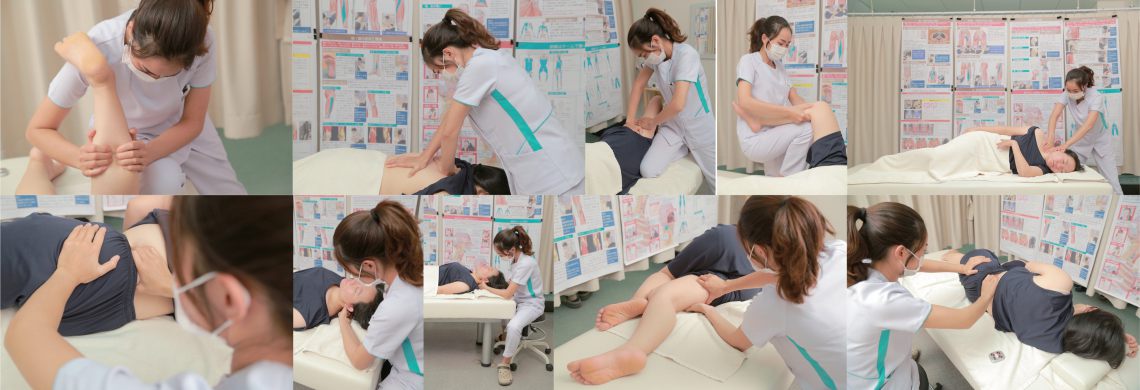Nice to meet you we are RAKURAKU CENTER. We perform therapy to remove the cause of people's symptoms.
What is frozen shoulder periarthritis?
1. Structure of the shoulder joint:• The shoulder consists of 3 bones: The humerus, scapula and clavicle form a head and glenoid joint. The humeral head fits into a shallow glenoid socket in the shoulder blade.• The strong connective tissue surrounding the joint is also called the shoulder capsule. Synovial fluid lubricates the joint capsule and shoulder joint to help the shoulder move more easily.Frozen shoulder is due to the thickening and stiffness of the shoulder capsule, causing pain and limited shoulder movement, ranging from mild to severe. Over time, the shoulder becomes very difficult to move, and full recovery can take up to 3 years.
What is frozen shoulder periarthritis?
1. Structure of the shoulder joint:• The shoulder consists of 3 bones: The humerus, scapula and clavicle form a head and glenoid joint. The humeral head fits into a shallow glenoid socket in the shoulder blade.
• The strong connective tissue surrounding the joint is also called the shoulder capsule. Synovial fluid lubricates the joint capsule and shoulder joint to help the shoulder move more easily.Frozen shoulder is due to the thickening and stiffness of the shoulder capsule, causing pain and limited shoulder movement, ranging from mild to severe. Over time, the shoulder becomes very difficult to move, and full recovery can take up to 3 years.
Frozen shoulder arthritis most commonly affects people between the ages of 40 and 60 and occurs in women more often than in men. In addition, people with diabetes have a higher risk of frozen shoulder than normal people. Physical therapy is the primary treatment recommendation for shoulder pathology, focusing on shoulder flexibility.
2. Symptoms of frozen shoulder periarthritis:
Characteristic signs of frozen shoulder arthritis are severe shoulder pain and the patient cannot move the shoulder on their own or must move with the help of another person. The pain from frozen periarthritis is often dull or aching. The level of pain often increases when the patient moves the arm. The pain is usually located in the outer shoulder and upper arm. In frozen shoulder, in many cases, the amount of synovial fluid in the joint is reduced, the shoulder joint capsule and connective tissue bands thicken and become stiff and tight.
Clinical manifestations of frozen shoulder periarthritis usually progress through 3 stages:• Stage 1 shoulder joint pain: The level of pain in this case is usually less severe than normal shoulder periarthritis. During this stage, the patient has more and more pain, the nature of the pain is due to inflammation. . Pain even when resting, more pain at night. Pain increases with any movement of the arm. The pain is often mild at first, gradually increasing and persistent over many months. As the pain becomes worse, the range of motion of the shoulder joint gradually decreases. Patients cannot comb their hair or scratch their back, and moving their arms forward and back is limited. This stage usually lasts from 6 weeks to 9 months.
• Stage 2 stiffness: Shoulder blade pain symptoms may actually improve during this stage, but stiffness remains.
During the 4 to 6 months of the "freeze" period, daily activities can be very difficult.• Phase 3 thawing: Shoulder motion slowly improves during the "thawing" phase. The range of motion of the shoulder joint returned to normal, but pain during movement persisted for a few more months. This stage usually takes from 6 months to 2 years.
3. Causes of frozen shoulder periarthritis:The cause of frozen shoulder periarthritis is currently unknown. However, there are several risk factors that increase the condition, including:• Age and gender: People 40 years of age and older, especially women, are more likely to develop frozen shoulder arthritis.• Diabetes: Frozen shoulder occurs more often in people with diabetes. The reason for this has not been clearly determined. In addition, diabetics tend to have more stiffness and will have pain for a longer period of time before "thawing".• Other diseases: Some other diseases related to frozen shoulder periarthritis include hypothyroidism, hyperthyroidism, Parkinson's disease and heart disease.• Prolonged shoulder immobilization: Frozen shoulder can develop after the shoulder has been immobilized for a period of time due to surgery, fracture, or other injury. Allowing the patient to move the shoulder immediately after injury or surgery is recommended to prevent a frozen shoulder.• Unknown risk factors: Most patients have unknown risk factors, possibly due to immune disorders, the body's immune system attacks its own joint capsule and synovial membrane of the shoulder joint, due to weakness. endocrine factors (postmenopausal women have a higher rate), due to vegetative nerve disorders in the shoulder joint...
4. Prevention and treatment measures:
Treatment of frozen shoulder periarthritis is difficult to completely cure.
Frozen shoulder periarthritis usually gets better over time, although it may take up to 3 years. The focus of treatment is to control pain and restore joint function through physical therapy. Early treatment in the early stages often achieves better results than late treatment.
Medical treatment Non-steroidal anti-inflammatory drugs: Drugs such as aspirin and ibuprofen reduce pain and swelling. Steroid injection: Can be considered in case of severe pain in the early and thawing stages. Cortisone is a powerful anti-inflammatory medication that is injected directly into the patient's shoulder joint.
Physical therapy: Medication measures help reduce pain and inflammation but do not help improve the range of motion of the shoulder joint because the joint capsule is still stuck and tight. Specific exercises will help restore movement. They can be performed under the supervision of a physiotherapist.
If you have symptoms of pain, please contact the RAKU RAKU center by methods below:
Phone number: 02439392525
Facebook: https://www.facebook.com/rakurakuVLTL
Web address: https://rakurakucenter.com/en
We will diagnose and consult when you need!



